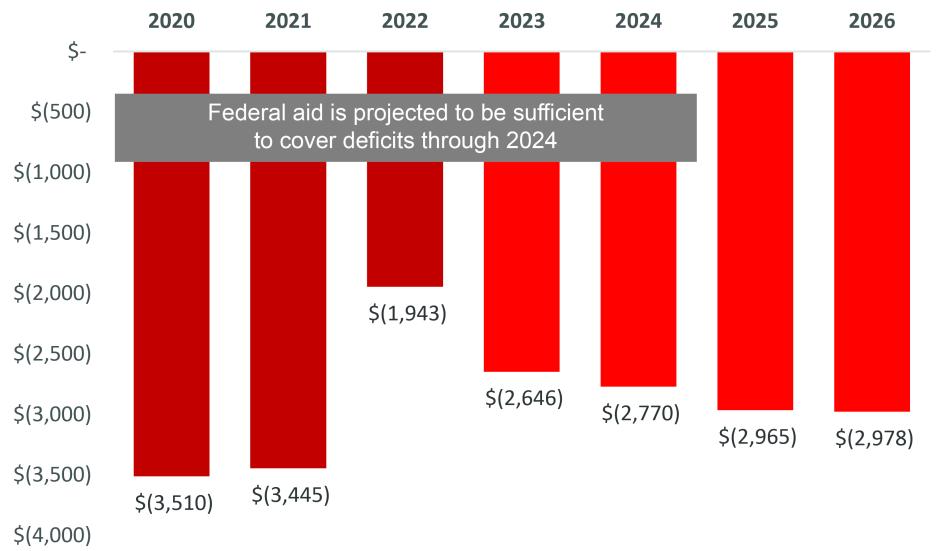The MTA’s Operating Budget funds the day-to-day costs of running subways, buses, and trains, as well as operating our seven bridges and two tunnels. Costs associated with expanding the MTA network and keeping existing assets in good working condition is funded by the MTA’s Capital Budget.
In 2022, the MTA’s Operating Budget is projected to be $19.379 billion. For a complete look at our current and past budgets, please review our financial documents.
Where our operating budget dollars come from
The largest share of MTA revenue — $7.222 billion — comes from dedicated taxes and subsidies the Authority receives from the cities and states that we serve. Another $6.870 billion comes from fares and tolls. Federal COVID-related aid, which the MTA received in 2020 and 2021, adds up to $2.877 billion.

How our operating budget dollars are spent
Labor and labor-related costs make up about 58% of all MTA operating expenses, including salaries, overtime, pensions, and health care. Non-labor expenses like materials, contracts, and utilities come to $4.574 billion.
The remainder of the operating budget covers debt service repaying the money we borrow to fund the Capital Program through the issuance of bonds.

Our financial outlook
The COVID pandemic has left the MTA facing a fiscal cliff.
Fares are a large share of the MTA’s operating revenue. When COVID hit and ridership dropped, the MTA received temporary aid from the federal government to cover the gap, but that money is rapidly running out.
As the region emerges from the pandemic, it’s clear that travel patterns have changed. New Yorkers are back to transit, but they’re taking fewer trips, and ridership isn’t projected to be back to pre-COVID levels in the foreseeable future.
This means that once federal aid is exhausted, as early as 2025, the MTA will be facing a $3 billion recurring budget shortfall. The MTA is exploring many options to address this budget gap.
